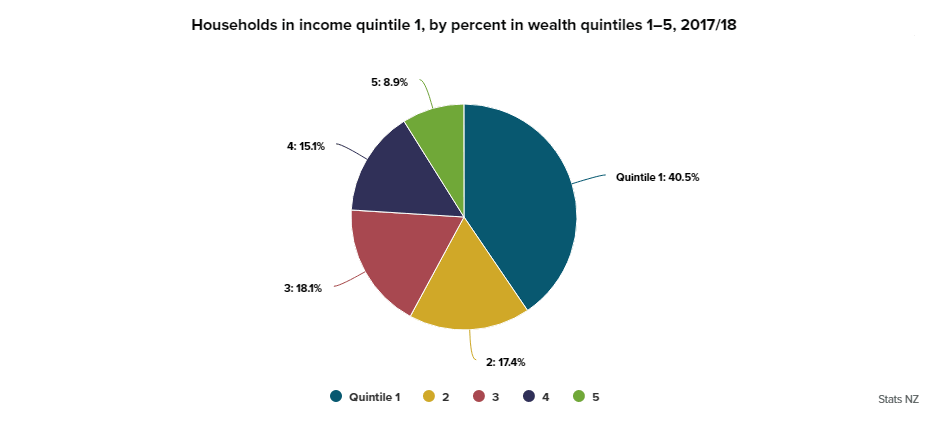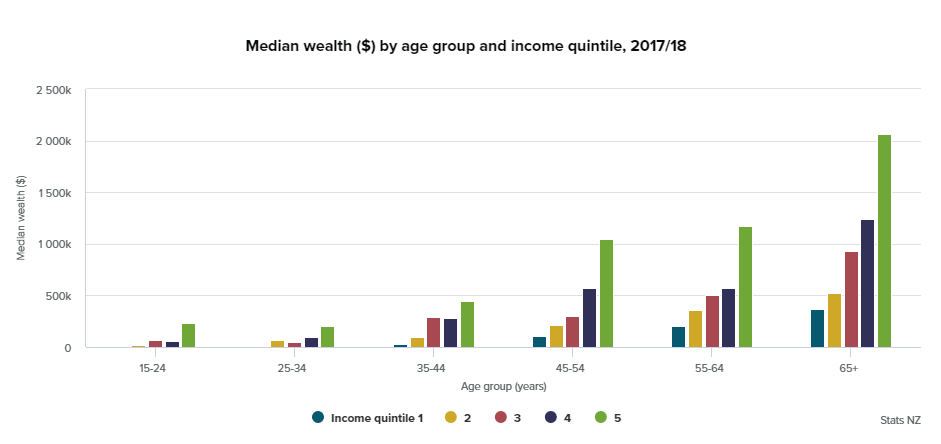Low income not always equal to low wealth
Low income not always equal to low wealth – Media release
27 February 2019
Of households on a low income, 4 in 10 also have the smallest safety-net of household wealth to fall back on if they lose a job or face unexpected costs, Stats NZ said today.
“Many households with a low income have little wealth behind them,” labour market and household statistics senior manager Jason Attewell said.
“But perhaps surprisingly, a low income doesn’t always mean low wealth. About 1 in 10 households with a low income is in the wealthiest group in society”.
“Income is important because it is the household’s main resource to meet day-to-day living costs. Wealth is important as it can be called on during times when people earn less, or face higher or unexpected costs,” Mr Attewell said.
“Looking at income and wealth together helps to better understand household financial security and how vulnerable some households may be to economic shocks.”
Of all households with the lowest incomes, 40 percent also have low wealth. Their level of wealth reflects how much they own, such as property and cash in the bank, and how much they owe, such as mortgage or credit card debt.
“However, for those with the lowest incomes, 9 percent were in the highest wealth bracket. This may reflect some households or families building-up a nest-egg over time, or whose members are retired or no longer working full time. Older people are more likely to have paid off their mortgage and have had their house increase in value over time” Mr Attewell said.
For analysis, income and wealth are divided into five different groups in the household net worth statistics. The highest group (quintile 5) represents the top 20 percent of households, by income or wealth, and the lowest has the lowest 20 percent.

Household net worth statistics: Year ended June 2018 shows the assets, liabilities, and wealth of New Zealand households and individuals. Data is from the Household Economic Survey 2017/18.
All income reported is total regular recurring income, which excludes one-off income types such as winnings and inheritances. Income statistics are adjusted by household size and household type to make comparisons easier.
Age affects wealth and income
Generally, people tend to earn more as they gain experience or skills and build up their wealth over time, and as they get older.
“For example, younger people who have little wealth and are on low incomes may be students or have young families. They’re still setting themselves up financially. They may be saving for their first home or have just taken out a mortgage,” Mr Attewell said.
We assign households to an age group, based on the age of the highest earner in the household.
For the year ended June 2018, household median wealth tended to increase for each age group, for each income quintile. People aged 15–24 years earning the highest income in that age group had relatively low median wealth ($236,000). However, it was households where the highest earner was aged 25–34 years that had the lowest median wealth ($199,000). For the 65+ households, the median wealth figure was around $2.1 million.

Ends


 Business Canterbury: Urges Council To Cut Costs, Not Ambition For City
Business Canterbury: Urges Council To Cut Costs, Not Ambition For City Wellington Airport: On Track For Net Zero Emissions By 2028
Wellington Airport: On Track For Net Zero Emissions By 2028 Landcare Research: ANZAC Gall Fly Release Promises Natural Solution To Weed Threat
Landcare Research: ANZAC Gall Fly Release Promises Natural Solution To Weed Threat NZ Anti-Vivisection Society: Auckland Rat Lovers Unite!
NZ Anti-Vivisection Society: Auckland Rat Lovers Unite! University of Canterbury: $1.35 Million Grant To Study Lion-like Jumping Spiders
University of Canterbury: $1.35 Million Grant To Study Lion-like Jumping Spiders Federated Farmers: Government Ends War On Farming
Federated Farmers: Government Ends War On Farming



